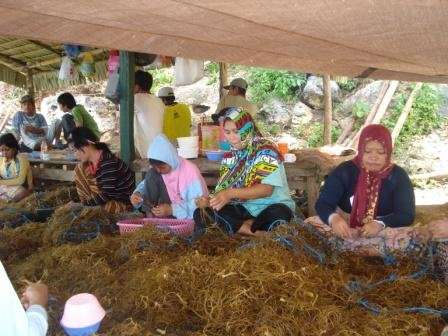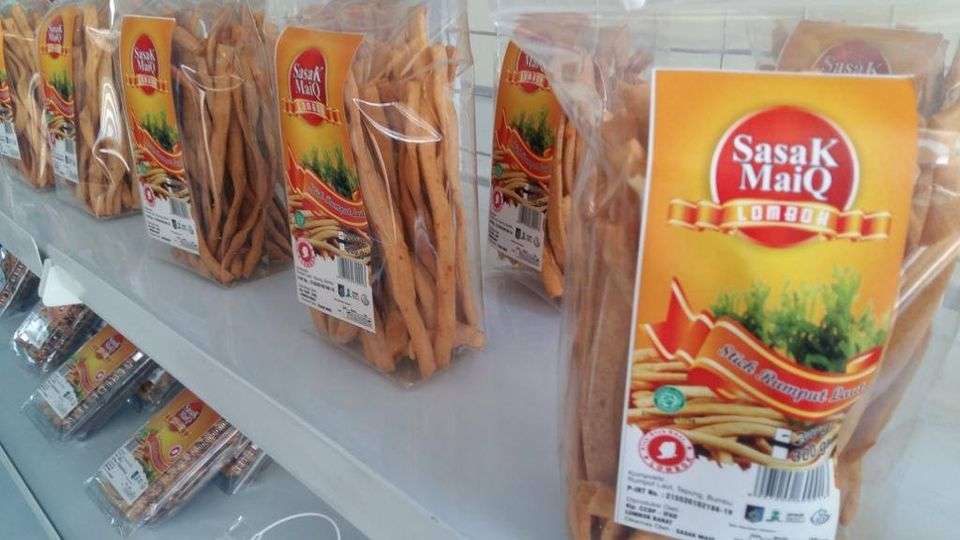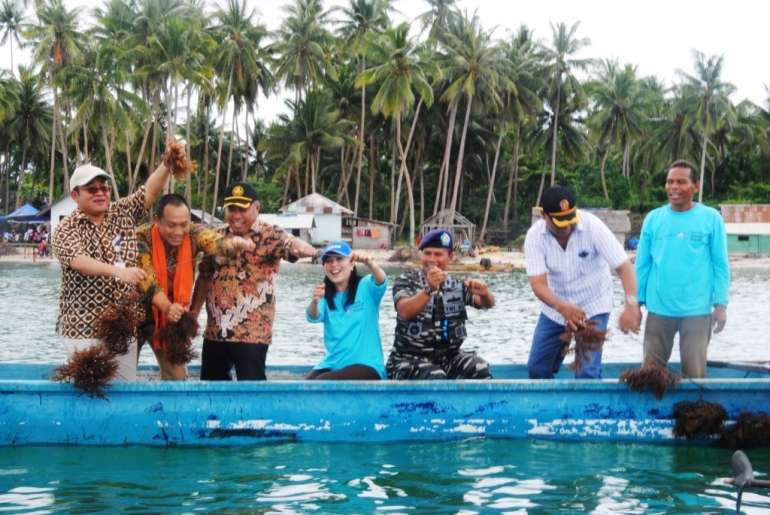PELAKITA.ID – In my Marine Science class session, my lecturer Prof Rajuddin Syamsuddin stated that seaweed is the future of Indonesia economic. That was mentioned 30 years ago.
Recently, seaweed is the most interesting topic to be discussed at the Ministry of Marine Affairs and Fisheries, including Ministry of Maritime and Investment of Indonesia.
The most powerful elite from Indonesia Luhut Binsar Panjaitan emphasized the urgency of seaweed program. “There’s a lot of downstreaming. So it’s not just nickel, there’s seaweed too,” said Luhut, Minister of Maritime and Investment of Indonesia.
So, how about the situation of the seaweed industry in Indonesia? The current condition of seaweed cultivation is labour intensive, but the welfare of farmers is still low.
There are 63 thousand Seaweed Cultivation Households in Indonesia. 64 percent of the cultivators only have elementary school education or didn’t even finish elementary school and 50 percent, have zinc as the main material for the widest part of the roof of the house.
The Maritime Ministry mentioned that 40 percent, have wood as the main material of the widest part of the wall of the house and only 5,9 percent have access to banks for financing.
So why seaweed? Seaweed farming or seaweed in general also protecting the environment and mitigating Climate Change. Seaweed also as bioindicator, as an indicator of overall ocean health.
Their existence in the sea improves water quality and prevents eutrophication. Also, prevents disease by acting as a biofilter for nutrients and pollutants in waters.
Seaweed farming or cultivation area considered as habitat provider for fish and other organisms, as part of the food chain for another marine biota. Produces Oxygen for the needs of marine and land animals
The most important thing is that seaweed regulating the climate through Carbon Sequestration of 173 Teragrams of Carbon/year (61–268 TgC/year) as stated by the Ministry of Maritime and Investment of Indonesia.
For the future development, Indonesia has a wide and conducive sea for Seaweed Cultivation. 0,9 percent, Indonesia’s aquaculture land area potential, is 12 million ha, seaweed only uses 0.3 percent of it (102 thousand ha).
In the full year, tropical seaweed can be harvested throughout the year vs. non-tropical seaweed only 4 or 6 months a year.
Seaweed cultivated for 45 days, a short harvest period, harvest can be done 6-8 times throughout the year. The workforce earns a stable income and the equipment can be used consistently
Indonesian waters do not experience the threat of typhoons/tornadoes that can damage seaweed cultivation. As comparison, loss of seaweed fields in the Philippines due to typhoon Odette – USD 3.9 Million.
There are more than 500 seaweed species in Indonesia with Various Potential Uses. Currently, seaweed cultivation focuses on three types, but the potential for other types is also large
Some people say, potential healthier food products from Seaweed are reducing obesity by lowering the caloric value of the die. Gives a salty taste without salt. Reduces lipid absorption and cardiovascular disease. Influence on Glycaemic Control. Help control blood glucose in type II diabetes
Potential of Bio stimulant Products: Reducing Use and Subsidy of Non-Organic Fertilizers. The Use of Fertilizer from Seaweed Also has the Potential to Increase Productivity, Reduce Costs and Increase Farmers’ Income.
Research indicates that substantial upscaling of seaweed farming would be required for meaningful climate mitigation to occur via this route. There are so many things can be done or improve during the seaweed farming program.
Such upscaling could have unforeseen effects on the Earth System and ocean ecology, and there is therefore a need for dedicated research on the environmental effects of large-scale seaweed farming.
In Farming context, encouraging large-scale cultivation. Acceleration and ease of permits for the use of sea space for seaweed cultivation. It is necessary to distinguish between marine space for industry vs traditional farmers.
In processing, Provision of incentives and ease of licensing for investment in the Seaweed industry, including distribution permits. Allocation of industrial areas for seaweed processing.
Basic infrastructure improvements in cultivation areas. Preparation of KBLI and standards for new products such as bio stimulants.
Market generation, Food: Business Matching Forum with the Food Industry. Agriculture: Affirmative action in the form of a pilot project by the Ministry of Agriculture or BUMN for biostimulant/seaweed fertilizer.
Bioplastics: expansion of restrictions on the use of regular plastics in various regions. For biofuels: research collaborations and pilots between state-owned enterprises, the private sector, universities
Contributor: K. Azis
Sources: MMAF dan The Ministry of Maritime and Investment of Indonesia.



